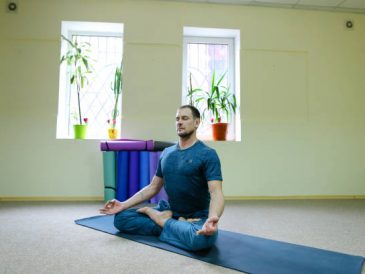The integration of yoga and mindfulness practices in educational settings has sparked debates regarding their perceived religious connotations. While some argue that these practices are inherently tied to Eastern religions, others contend that they can be secularized and beneficial for student well-being. This essay aims to explore the complexities of this issue, examining both sides of the argument while ultimately advocating for the secular utilization of yoga and mindfulness in schools.
Understanding Yoga and Mindfulness:
Yoga and mindfulness are often conflated, yet they represent distinct practices with overlapping principles. Yoga encompasses physical postures (asanas), breath control (pranayama), and meditation techniques aimed at enhancing physical, mental, and spiritual well-being. Mindfulness, on the other hand, involves cultivating present-moment awareness through meditation, breathing exercises, and mindful activities.
Religious Origins:
Critics argue that yoga and mindfulness have deep roots in Hinduism and Buddhism, respectively, making their introduction into schools a violation of the separation of church and state. They point to the spiritual underpinnings of these practices, such as the use of mantras (sacred sounds) in yoga and the Buddhist concept of non-attachment in mindfulness. From this perspective, incorporating yoga and mindfulness in schools could be perceived as promoting religious beliefs.
Secular Adaptations:
Proponents of yoga and mindfulness in schools emphasize their secular adaptations, which focus solely on the physical and mental health benefits, devoid of religious content. For instance, in a school setting, yoga may be presented primarily as a form of physical exercise, promoting flexibility, strength, and relaxation, without delving into its spiritual aspects. Similarly, mindfulness practices can be taught as tools for stress reduction and emotional regulation, divorced from any religious context.
Scientific Evidence:
Numerous studies have documented the positive effects of yoga and mindfulness on student well-being. Research suggests that regular practice can improve attention, self-regulation, and social-emotional skills while reducing symptoms of anxiety and depression. These findings underscore the potential benefits of integrating yoga and mindfulness into school curricula, regardless of their religious origins.
Cultural Appropriation Concerns:
Critics raise concerns about the cultural appropriation of yoga and mindfulness in Western contexts. They argue that divorcing these practices from their cultural and religious contexts erases their origins and perpetuates a form of cultural imperialism. Moreover, they caution against oversimplifying these ancient traditions into mere fitness fads or relaxation techniques, thereby stripping them of their depth and richness.
Inclusive Practices:
To address concerns about cultural appropriation, advocates emphasize the importance of respecting and honoring the origins of yoga and mindfulness while making them accessible to diverse populations. This involves acknowledging their roots in Eastern philosophies and promoting cultural competency among instructors. Additionally, efforts should be made to ensure that yoga and mindfulness programs are inclusive and welcoming to students of all backgrounds.
Legal Considerations:
The legal landscape regarding the inclusion of yoga and mindfulness in schools varies by jurisdiction. In the United States, courts have generally upheld the secular use of these practices in educational settings, provided they are taught in a manner that does not promote or endorse any particular religious belief. However, controversies may arise in cases where individuals perceive such practices as infringing upon their religious freedoms or violating the establishment clause of the First Amendment.
Conclusion:
The debate surrounding the inclusion of yoga and mindfulness in schools underscores the complex interplay between religious, cultural, scientific, and legal considerations. While critics raise valid concerns about the religious origins and cultural appropriation of these practices, proponents argue for their secular adaptation and potential benefits for student well-being. Moving forward, it is essential to strike a balance that respects the diverse perspectives and beliefs within our society while prioritizing the health and development of our youth. Ultimately, with careful attention to cultural sensitivity, inclusivity, and legal parameters, yoga and mindfulness can be valuable tools for promoting holistic education and nurturing the whole child.




